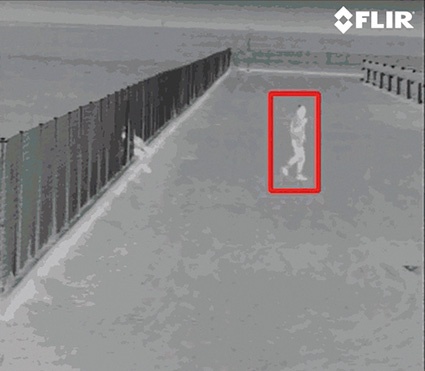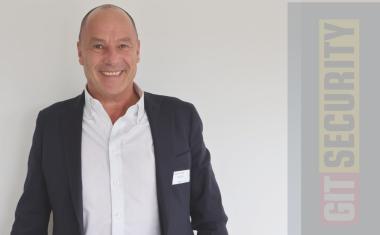Perimeter Protection of Solar Parks: Cost-Saving with Thermal Imaging Cameras
Spanish security specialist Omega Seguridad has already secured over 20 solar parks across Spain and its neighboring countries. The company always tries to convince its customers t...


Spanish security specialist Omega Seguridad has already secured over 20 solar parks across Spain and its neighboring countries. The company always tries to convince its customers to install thermal imaging cameras for perimeter protection and surveillance projects. One recent example is a solar park surveillance project in Sebis, Romania, using FLIR's SR series of surveillance cameras offering high-quality thermal imaging in any night- or daytime environmental conditions. They provide high contrast imagery - optimized to get the most out of video analytics.
Omega Group, based in Sevilla, Spain, offers a comprehensive range of surveillance and security services, including the installation and maintenance of systems and equipment for intrusion and fire detection, CCTV, access control, etc. One of the company's main areas of expertise is perimeter protection of solar parks. As an increasingly important provider of electricity across the globe, solar parks need to be effectively secured. The threats these installations face are the same as for any other energy producing facility: vandalism, sabotage and terrorism. Based on a proven track record for perimeter protection projects across Spain, the company has also been able to offer its expertise to solar park projects in other European countries like Portugal, France, Italy and Romania.
Solar Park Surveillance Project in Romania
For a new solar park, located in Sebis, Arad, Romania, the company installed 22 thermal imaging cameras for perimeter surveillance purposes. The new park is the country's largest and also one of the largest parks in Europe. The park has been developed by Bester Generación, a leader in the renewable energy market, specializing in the promotion, construction, operation and maintenance of infrastructures for the production of clean energy. It stretches across 200 hectares and includes some 72,000 photovoltaic panels, amounting to 15 MW of power. The new solar park is said to ensure the energy needs for around 100,000 people.
The total perimeter, including two separate confined areas of approximately 2.1 km, could be covered with a total of 22 cameras. On average, this amounts to approximately one thermal camera per 190 meters.
SR series
For this particular project, the company relied on FLIR's SR series of surveillance cameras, offering high quality thermal imaging in any night- or daytime environmental conditions. More specifically they chiefly used the SR-313 camera with 35 mm lens and 320 x 240 resolution, next to the SR-324 camera with 19 mm lens and 320 x 240 resolution. This series of security cameras provides high contrast imagery optimized to get the most out of video analytics software. In this case, video analytics was provided by Spanish company Davantis.
The company usually offers two options for perimeter protection to its customers: CCTV cameras and thermal imaging cameras. Although traditional CCTV systems are effective for security and surveillance applications, they are not able to see in total darkness. As a result, they have to be complemented with additional lighting, which again allows the cameras to look at night over a certain distance.
Antonio Millán Fernández, project manager at the company, explains why his company always makes an extra effort to convince the customer to choose thermal imaging cameras: "Thermal cameras can see much farther than traditional CCTV cameras and therefore you need less of them. So in short: less cameras, less issues."
Smaller Investment
Although a thermal camera is still more expensive than a visual video camera, the investment cost for perimeter surveillance will still be lower, since you need fewer camera units. Fewer cameras also mean that there will be less investment required for all camera-related equipment (meaning: all equipment that is needed to get the camera operating properly and to get the video signal onto the control room screen). All these added costs need to be made per camera unit.
By reducing the number of required cameras, thermal imaging allows customers to make significant savings with the camera-related equipment and civil works. On top of that, thermal imaging cameras need no lighting equipment whatsoever and will operate with the same accuracy during night and day. Last but not least, the company calculated that the overall power consumption of a project with traditional CCTV systems is about 50% higher than the power consumption of a project with thermal cameras. This is a considerable saving on the electricity bill of the end user.
"For distances between 60 and 120 meters that would require two conventional cameras, but only one thermal camera, the cost of equipment involved on both systems would be equivalent," comments Enrique Delgado Torres, engineer and project manager. "For distances between 120 and 180 meters where 3 conventional cameras would be required, the equipment associated to the thermal system becomes more economical. Longer distances will make the advantage bigger."
"The more bends and curves a perimeter has, the more camera positions you will need to have a sufficiently good view," comments Vicente Nanclares Ocio, director of the engineering department. "Luckily for us, solar parks generally tend to have straight shapes, so this allows thermal cameras to see even farther than 180 meters."
Better Performance with Thermal Imaging
The lower overall investment is not the only reason why the company prefers thermal imaging for the Sebis project in Romania. Thermal cameras also have a higher accuracy and they generate fewer false alarms, which ultimately results in less frustration and less workload for the control room operator. "Obviously, we no longer experience light-related false alarms," comments Vicente Nanclares Ocio. "Sometimes, car headlights can set off false alarms, but since thermal cameras are unaffected by light, they are also not disturbed by it."
"Thermal cameras also allow us to see better through fog. Sometimes, the fog can be so dense that traditional CCTV cameras are unable to see through it."
Business Partner
FLIR Systems, Inc.27700 SW Parkway Avenue
Wilsonville, OR 97070
US
most read

Security management, building security & perimeter protection: the winners of category E at the GIT SECURITY AWARD 2026
GIT SECURITY AWARD 2026: Security management, building security & perimeter protection - an overview of the most innovative solutions

When the Internet stumbles: Why DNS is important
When DNS fails, the internet stumbles-AWS outage proves resilience and redundancy are vital for digital trust


GIT SECURITY AWARD 2026 - The winners have been announced!
GIT SECURITY AWARD 2026: The best safety and security solutions of the year - now an overview of all winners

Assa Abloy's battery-powered Aperio KL100 secures lockers
Boost workplace security and operational flexibility by securing more than just doors.








